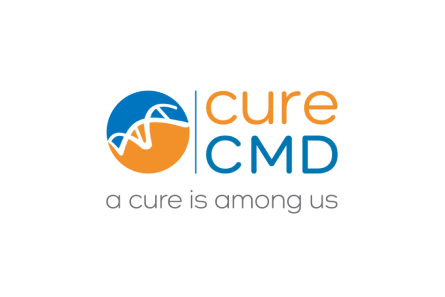Cure CMD
Cycle 1
The congenital muscular dystrophies represent a group of diseases causing muscle weakness at birth. Several defined genetic mutations cause muscles to break down faster than they can repair or grow. A person with CMD may have various neurological or physical impairments. Some never gain the ability to walk, while others lose the ability as they grow older.
Last updated 04/30/2025
Clinical
Disease Class
Cardiac diseases
Developmental anomalies during embryogenesis
Genetic diseases
Neurological diseases
Neuromuscular diseases
Ophthalmic diseases
Respiratory diseases
Body Systems
Cardiovascular / Circulatory
Digestive
Metabolic
Muscular / Skeletal
Nervous / Sensory
Respiratory
Organs
Bones
Brain
Connective tissue / joints
Eyes
Heart
Intestines
Lungs
Muscles
Skin
Known Genetic Link
Yes, one or more genes directly cause the condition
causative_genes
ALG13
B3GALNT2
B4GAT1 (B3GNT1)
COL6A1
COL6A2
COL6A3
CRPPA (ISPD)
DAG1
DOLK
DPM1
DPM2
DPM3
FKRP
FKTN
GMPPB
LAMA2 (MDC1A)
LARGE1
LMNA
POMGNT1 (LGMD2K)
POMGNT2 (GTDC2)
POMK (SGK196)
POMT1
POMT2
RXYLT1 (TMEM5)
SELENON (SEPN1)
TRAPPC11
contributory_genes
None specified / unknown
Type of Inheritance
Autosomal dominant
Autosomal recessive
De novo
Newborn Screening
No
Disease Mechanism(s)
Cilia dysfunction
Enzyme deficiency
Extracellular matrix abnormality
Glycosylation disorder
Insulin pathway defects
Mitochondrial disorder
Pathogenic mutation
Protein misfolding
mTOR pathways dysregulation
Age of Onset
Early childhood (age 1+-5)
Infancy (age 0-1)
Middle childhood (6-11)
Prebirth
Average Age at Diagnosis
Adolescence (12-17)
Adulthood (age 18-64)
Early childhood (age 1+-5)
Middle childhood (6-11)
Life Expectancy
Adolescence (12-17)
Adulthood (age 18-64)
Early childhood (age 1+-5)
Elderly (age 65+)
Infancy (age 0-1)
Middle childhood (6-11)
Pre-Birth
Affected Sex(es)
Female
Intersex
Male
National Prevalence
1001-10000
Global Prevalence
1001-10000
National Incidence
Unknown
Global Incidence
Unknown
Populations and/or ancestry with higher prevalence
some genes have founder mutations
Symptoms / Phenotypes
abnormal brain features
cardiac abnormalities
failure to thrive
feeding difficulties
hyperlaxity / joint laxity
hypoglycemia
intellectual disability
joint contracture
muscle weakness
osteopenia
osteoporosis
respiratory insufficiency / respiratory failure
seizures / epilepsy
vision problems
Biomarkers
Diagnostic
· creatine kinase and brain abnormalities for some subtypes
Existing Therapies
Off-Label Drug Use
Other
· Hyperinflation therapy via cough assist, bipap/ventilator, soliosis surgery, contracture release, feeding tube, physical and occupational therapy, vitamin D and calcium supplements
Organizational & Research
Cell Lines
B lymphocytes
Fibroblasts
iPSCs
Lymphoblasts
Cell Lines, Institution
Coriell Institute
FUJIFILM Cellular Dynamics, Inc. (FCDI)
Cell Lines, Involvement
Consulted
Funded
Cell Lines, share
All our cell lines are freely available
Disease Model
Mouse
Organoids
Zebrafish
Disease Model, Involvement
Funded
Disease Model, share
Some of our disease models are freely available
Clinical Trial Role
Data analysis
Data sharing
Focus group
Funding
Meeting with regulators
Outcome measures, development
Recruitment and outreach, patients
Recruitment and outreach, trial sites/physicians
Results dissemination, publication
Study material design, review (not protocol)
Study protocol design, review
Travel coordination
Biobank, Institution
Coriell Institute
Biobank, Involvement
Consulted
Center of Excellence, Institution
None
Registry
Yes, we have a registry that we created
Data Collected, Registry
Genetic data
Patient contact info
Patient-reported data
Data Entered by, Registry
Patients
Platform, Registry
Ordinal Data
Natural History Study
Yes, we have collaborated on a natural history study
Data Collected, Natural History Study
Clinical endpoints (outcomes)
Electronic health records/electronic medical records
Genetic data
Imaging data
Medication usage
Patient-reported outcomes
Prospective data
Retrospective data
Platform, Natural History Study
Ordinal Data
FDA Patient Listening Session
Yes
FDA Patient-Focused Drug Development (PFDD) Program
Yes
ICD Codes
We use an ICD-10 code capturing the family of diseases to which our disease belongs
We use an ICD-11 code capturing the family of diseases to which our disease belongs
Diagnostic Guidelines
Yes, we have published formal guidelines in a peer-reviewed journal
Science Advisory Board Policies
No policies
Research Network Policies
Has CRN but no policies
Research Roadmap
Yes we have a Research Roadmap, and will share policies
International Chapters
None
International Partners
Europe
Middle East
North America
Oceania
South America
